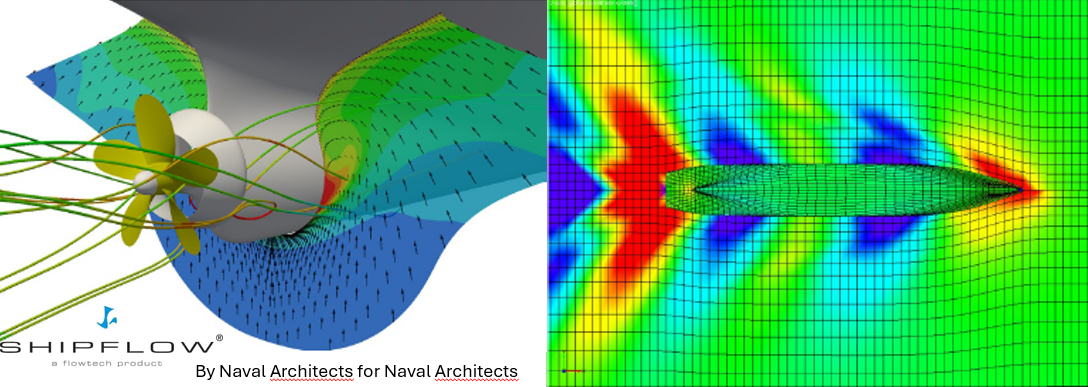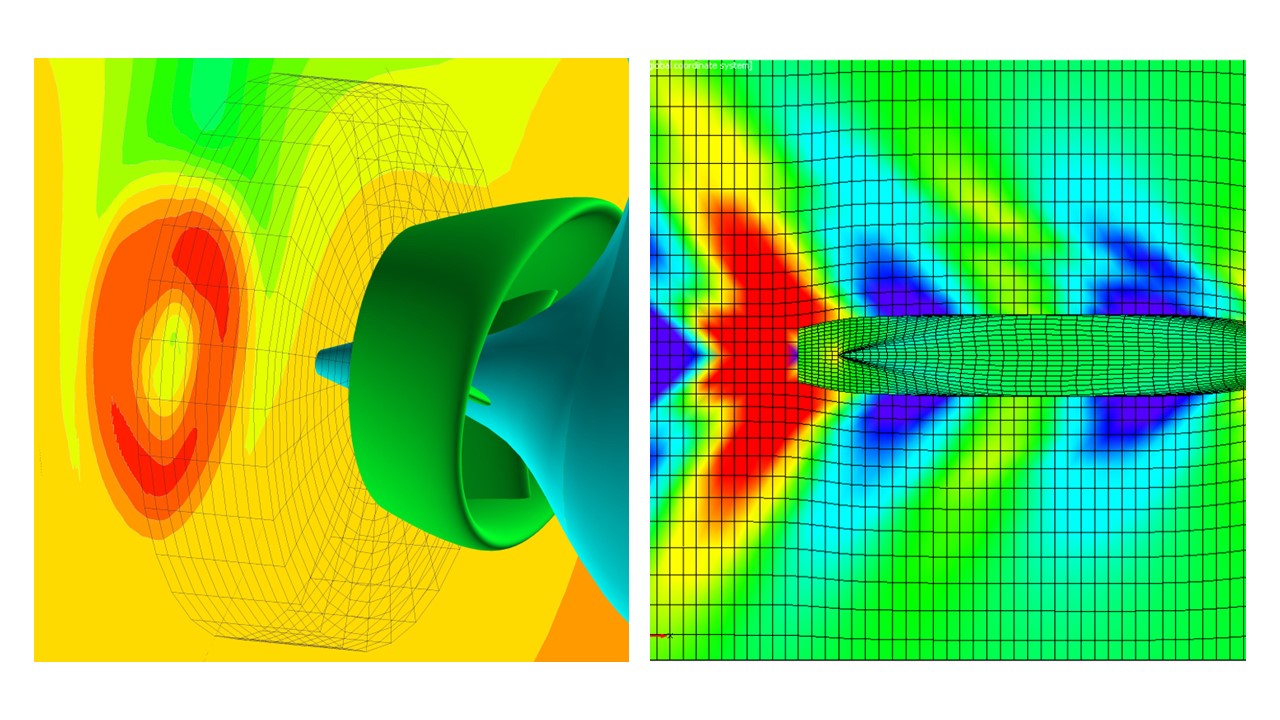CFD SOFTWARE SHIPFLOW from FLOWTECH International AB, SWEDEN
SHIPFLOW stems from long term research at FLOWTECH International AB in close cooperation with SSPA and the Naval Architecture Department at Chalmers University of Technology.
Product CFD software for ship design
SHIPFLOW BASICSHIPFLOW RANS SHIPFLOW MOTIONSSHIPFLOW Design – Advanced



Applications
Hull optimization with Lackenby

Hull form designers are constantly confronted with the problem of how to modify a given hull geometry to improve hydrodynamic performances. This leaflet demonstrates the effective use of SHIPFLOW in successfully refining the hull lines at initial design stage by Cp curves variation based on Lackenby shift.
Bulb for wave resistance
The bulbous bow is considered an effective means to reduce the resistance of a ship. A bulb reduces wave resistance by lowering the bow wave system and it also reduces the viscous resistance by smoothing the flow around the forebody. For slender fast hull forms such as Ro-Ro ships the primary reduction in resistance is due to cancellations in the bow wave system, which is accomplished by interference between waves generated by the bulb and the ship. The cancellation depends on the phase and amplitude of each wave system. At optimum conditions the two waves may cancel each other out totally. The phase difference of the two wave systems is determined by the location of the bulb, and the amplitude of the bulb’s waves are determined by the bulb volume. However, designing an optimum bulb is still a difficult task because no design tool is available for common design problems, such as how large bulb should be and where the bulb should be located. The present leaflet demonstrates how the designer can make an optimum bulb design using SHIPFLOW FRIENDSHIP Design Package efficiently and effectively

Improvement of Aftbody Hull Form

Hull form designers are constantly confronted with the problem of how to modify a given hull geometry to improve hydrodynamic performances. Fore body hull forms can be optimized relatively easily by minimizing wave resistance, but design of aft body hull forms has to be compromise between the conflicting requirements of acceptable wake flow quality and speed performance. The present leaflet shows one example of a SHIPFLOW application to an aft body design improvement by assessment of wake quality and resistance.
